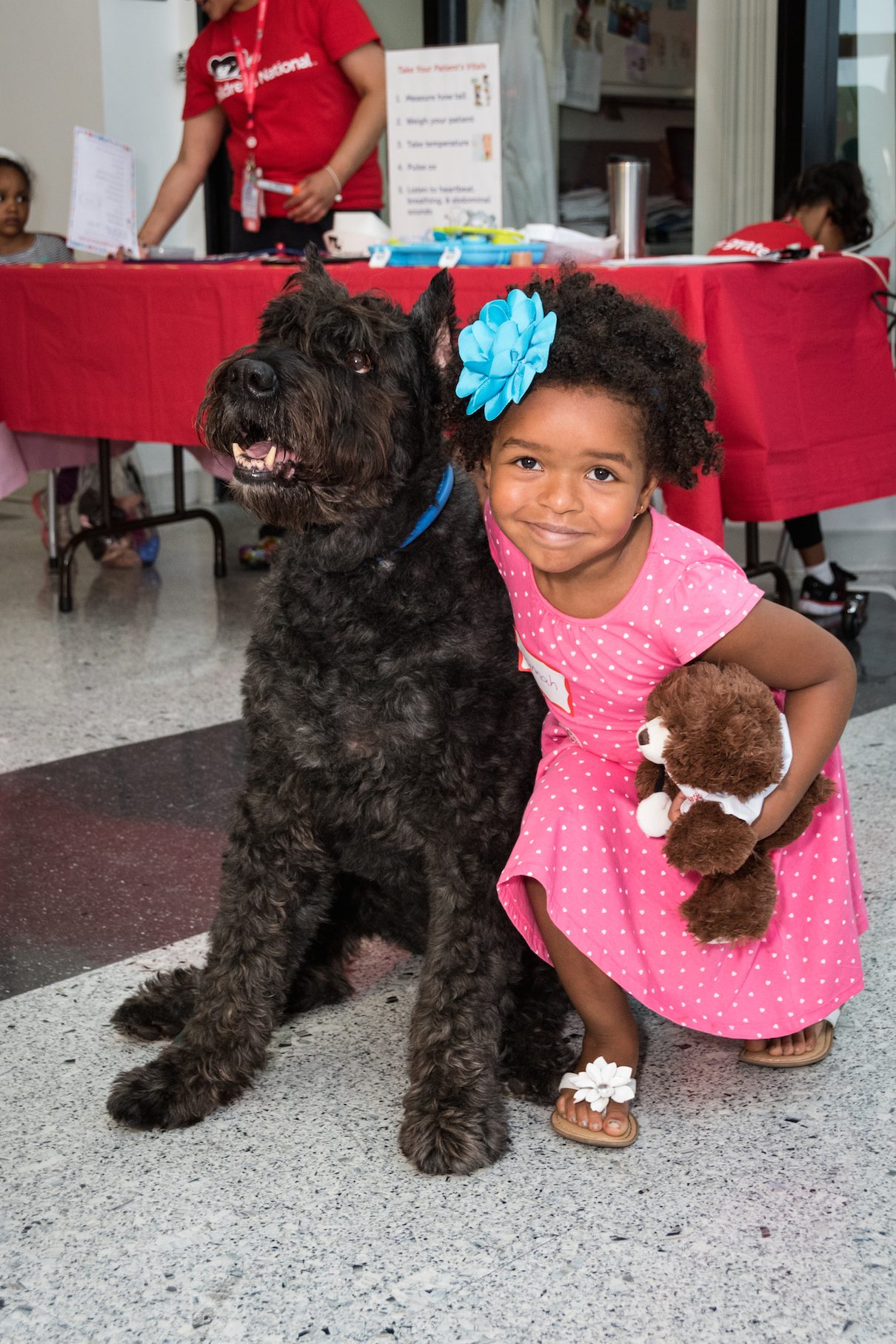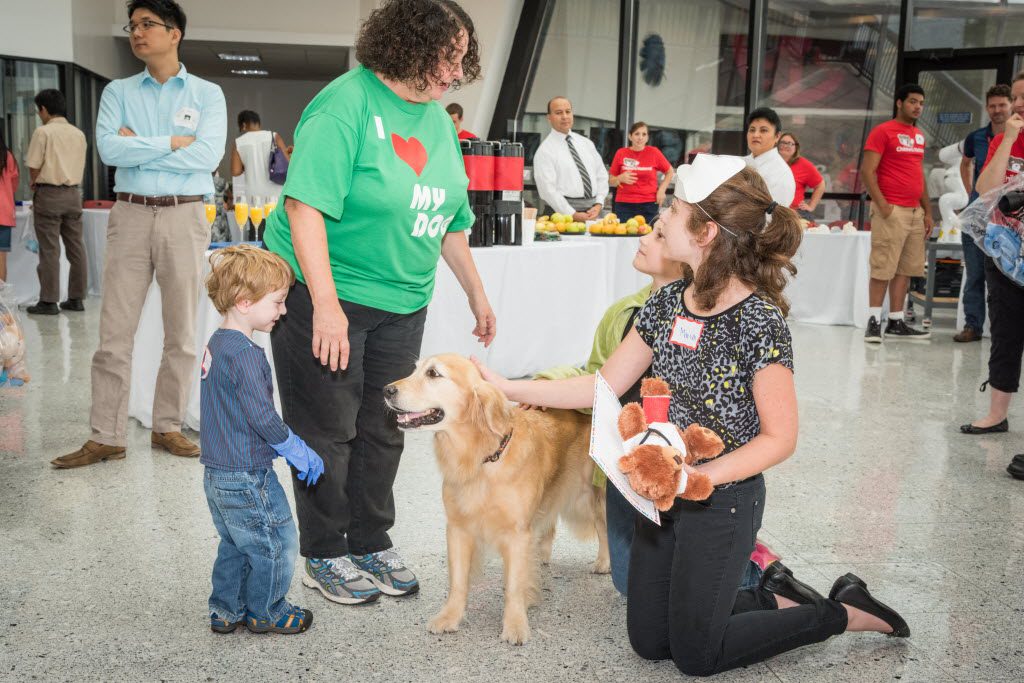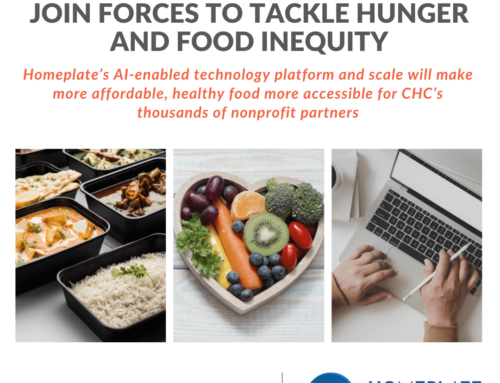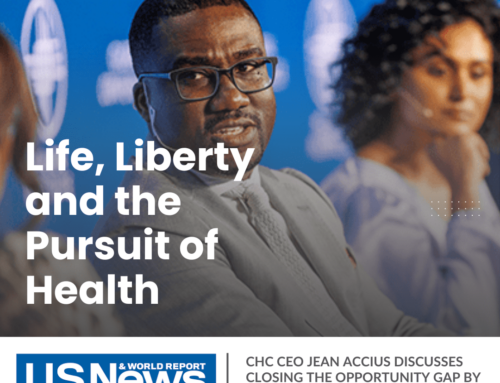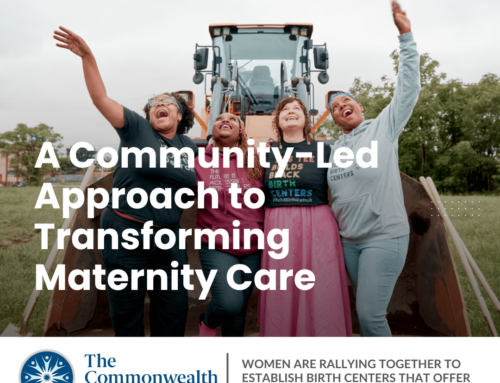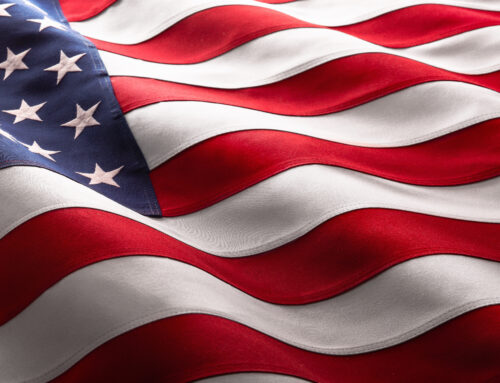An interview with Miriam Selman, Children’s National Hospital Foundation
 An interview with Miriam Selman, Children’s National Hospital Foundation by Shelby LaTona, CHC Manager, Nonprofit Partnerships
An interview with Miriam Selman, Children’s National Hospital Foundation by Shelby LaTona, CHC Manager, Nonprofit Partnerships
CHC: Creating Healthier Communities exists so that every person in every community has an opportunity to live their healthiest lives. We advance this mission through our collaboration with communities, businesses and nonprofit partners. Children’s National Hospital Foundation offers a great example of the potential of partnership. Children’s National began partnering with CHC in 2020 for workplace giving campaigns. The organization now also partners with CHC for employee engagement opportunities, including connecting with Saks Fifth Avenue employees to share their impact. CHC’s Shelby LaTona sat down with Miriam Selman, Senior Director of Corporate Partnerships, to learn more.
Miriam, would you like to introduce yourself and share a little bit about who you are?
My name is Miriam Selman. I am the Senior Director of Corporate Partnerships at Children’s National Hospital Foundation. I’ve been with the Foundation for a little over 9 years and my role is to lead the corporate team in all kinds of corporate engagement and support philanthropy for the priorities of the hospital and programs.
Can you share some background on your organization?
Children’s National opened its doors back in 1870 as a result of the orphans of the Civil War, and today we’re still in Washington, DC. We have 300 beds. We see approximately 300,000 kids per year, and we have 450,000 patient visits. We are the only freestanding hospital for pediatrics between Richmond, Virginia, and Philadelphia. We span across the entire region. We have 11 outpatient centers. We have mobile vans that go into DC. We have 1400 community pediatricians. And what we’re very proud about is back in 2018, we were ranked #5 by U.S. News and World Report as the number five pediatric hospital in the country and the number one NICU. And we have kept that now for five years in a row. So we’re very proud of that.
If you were to brag about your organization, what is the first thing that comes to mind?
I would say the first thing that comes to mind is the word care. Children’s National cares for the whole child, their physical, mental, and emotional health. We make a hospital stay much less stressful, and we have programs that support that which many people don’t even know about.
Some examples I’ll give you is we have certified child life specialists. They offer opportunities to play, share feelings and help patients better understand the hospital environment. We have bedside music therapy where we have certified music therapists and they help the children get through extremely difficult times. We have a very large facility and visitation dog program, a pet therapy program. These programs help children who may have a long-term stay, who might be in the cancer ward, and also children who need MRI, CT scans. You know, we do this without anesthesia or sedation, and many times these dogs help relax and calm these patients. And lastly, we have many events throughout the entire year including holiday parties, art related events and yoga classes. All of this provides just a whole variety of care for these children beyond just the medical care that they come for.
So how does Children’s National support the community that it serves? Where do you see your greatest impact?
We are a nonprofit hospital, actually a 501(C)3 hospital. And the reason we have this status because of the amount of community benefit that we provide. That’s what makes the difference. And so community benefit, we believe, is our responsibility and the primary driver for how we quantify and track our work. It is defined as a program or activity that provides treatment or promotes health and healing as a response to identified community needs. This year, for example, there were 146 community benefit programs and activities that addressed a broad spectrum of health topics from 38 different hospital departments. From hosting family centered cooking classes and vaccine clinics to educating the next generation of health professionals, Children’s National is always proud to give back to our community. We strive to help create a community where families can thrive.
One example, a Children’s National pediatrician at our Anacostia Health Center, which is in Ward 7, an underrepresented ward, understood that increasing access to healthy food resources meant supporting families with the tools they need to leave help to live healthy lives. Even though clinicians screen for unmet social needs, such as lack of access to healthy foods, it’s often a problem that is just way too complex to address in a clinic visit a very short appointment. So, knowing that families needed multifaceted resources, he began a program with community based partners and founded a program called the Family Lifestyle Program. It’s a family centered clinical community collaborative and it is designed to help develop novel ways to address food insecurity and diet related chronic diseases such as diabetes throughout the entire District of Columbia. So we’re very proud of these very specific programs and needs that we address as being a nonprofit hospital in DC.
Being a nonprofit I know you work with volunteers. How do you engage volunteers in your mission delivery?
We have many ways for volunteering and providing support. One of our largest community focused events is a volunteer driven type of event. It’s called our Race For Every Child. Families, companies, employees, patients, anyone who wants to get involved and support our hospital gathers in DC on Freedom Plaza in October for this event. It has been very successful for our corporate partners to provide volunteerism, employee engagement, and hands on involvement. We’ve gotten tremendous feedback from our partners.
Another example is a company that engaged volunteers for a very specific cause and that was Saks. They had their employees create e-cards for our hospital patients. In addition to that, we have several virtual volunteer opportunities for employee engagement: creating e-cards, organizing comfort kits for patients, recording virtual story times. We’ve transitioned to a lot of virtual opportunities after the COVID years. A lot of individuals have taken advantage of that for our children.
What steps is your organization taking to address HealthEquity and access to care in the communities you serve?
This is a big, big focus and priority for Children’s Hospital. Children’s identifies and tracks inequities affecting children who experience racism and poverty very specifically. We actively listen to families to learn about their lives, and work with community leaders to problem solve and advocate for child-focused policies. We have many initiatives to address health equity and access to care.
I’ll give you just a few examples. Our largest one is called our Child Health Advocacy Institute; we call it CHAI. It’s the first hospital-based center of its kind that champions these efforts. CHAI leverages data to make positive change for families living in Washington DC and beyond. This institute promotes policy actions and systemic innovations to build healthier lives for kids.
Families also receive care beyond our fixed locations through these initiatives, such as our mobile health van and telehealth programs. Our health screenings help identify concerns and connect patients to the right care at the right time. Our mobile health program was established 25 years ago and it brings essential medical services to patients in DC, like immunizations. We bring this care to families in their neighborhoods. We meet them where they are. It is one of many programs that provides high quality and trusted care in communities. I’ll give you one more example, our community health workers. We actually have community health workers that are trained in health promotion and disease prevention, and they connect families in communities to care providers. They screen families for social risk factors such as food insecurity and housing instability. They are wellness navigators who create customized care plans and guide families to resources, in our hospital and beyond our hospital.
Can you provide one example of how your organization partners with other charities or corporations to collaborate and serve the community?
We have a very, very strong program that in 2020 Children’s National created. It’s a community network to specifically address racial health disparities for young families and children. It was in partnership with the Clark Foundation. We named this program The Clark Parent and Child Network at Children’s National Hospital. This network pairs clinical innovation with community partnerships to support underserved pregnant/postpartum women and children, up to the age of three. It bridges the gap between prenatal care and early childhood development, with a focus on mental health. Its focus is to create greater access to mental health care. We do that by increasing community-based screenings, support for pregnant women, placing more mental health specialists alongside pediatricians and mental health clinics for infants and toddlers. We promote positive home environments and build stronger safety nets for at risk children. Lastly, it places family advocates in vulnerable neighborhoods and establishes a network of community partners to support these families with social, emotional, and financial challenges. We’re very proud of this big program that we launched throughout the community.
So shifting gears a little bit, how would you say that partnership with CHC has benefited your organization?
CHC has brought a lot to Children’s National and given us tremendous benefits. We engage individuals across the country. It used to be just the Combined Federal Campaign, but now through CHC, we have accessed state campaigns. We’ve seen the revenue come back to us in support of our patients and families. And before we began working with CHC, we didn’t even realize we could activate individuals across the country in this way. It’s amazing how many have had experiences with Children’s National through our specialty services and now they have the opportunity to engage and give back. And we’ve seen it in the in the numbers and in the dollars. And we’re very grateful for this for this broadening of our network.
What is one suggestion you would make to a new nonprofit who is joining CHC?
You know, to be perfectly frank, I would say you really should take advantage of all the opportunities the CHC team provides for engaging with campaigns and individuals. It really requires providing updated and specific documentation. So, you need to work closely with your own business administration and finance team. First of all, to ensure that you have the correct documents. Then in our foundation, we have assigned a specific person to work with the CHC counterpart because it takes time and it takes focus. And if you give it the time and focus, you will see the returns in many ways, but you have to be able to say, OK, let’s get this done together. It’s a partnership with CHC and then you’ll see the return on investment for sure.
Thank you, Miriam. And lastly, what does it mean to you to create healthier communities?
So in a nutshell, I would say we create healthy, healthier communities by addressing the health and wellness needs of families and kids throughout the entire community and raising critical funds needed. We really need to raise these funds to activate programs and initiatives, that not only address these needs, but also ensure tremendous impact.
—–
Miriam Selman has spent the past 25 years working for non-profit organizations to help build strategic, successful corporate partnerships. She began her career at National Public Radio and then moved to the National Trust for Historic Preservation to launch a new corporate partnerships program. She joined Children’s National in June 2014 to help grow and expand the corporate partnership program, aligning the nonprofit mission with the goals of corporate partners in order to build long-term, strategic partnerships. Hailing from Silver Spring, MD, Miriam received her undergraduate degree from the University of Maryland and her MBA from the George Washington University.

